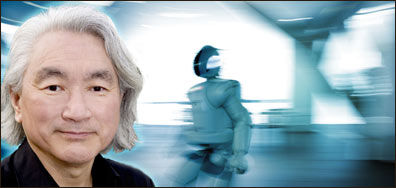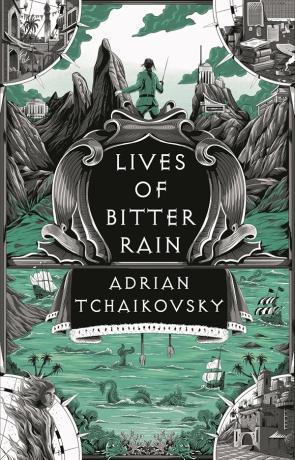Science Fiction may be closer to reality than you think

The BBC have reported that many of the science fiction ideas including invisibility cloaks, teleportation and even time travel may be closer to reality that you might think.
The news story follows a recently published book by the renowned theoretical physicist Dr Michio Kaku, who is the co-founder of string field theory (often referred to as the theory of everything).
Dr Kaku has been quite shocked to discover that many of the ideas behind science fiction are actually pretty close to becoming science fact. In the past some science fiction writers like Isaac Asimov and Arthur C Clarke were also considered futurologists and many of their science fiction stories have since become fact (Arthur C Clarke contributed to the concept of Geostationary Satellites as far back as 1947), so this finding isn't completely surprising.
What is suprising is just how far science has already come towards ideas like invisibility, teleportation and time travel:
Invisibility
Most scientists used to think this was completely impossible and would never be achieved, however according to Dr Kaku this view is wrong and this technology is quite possible. This view is re-inforced by the recent announcement by Professor Ulf Leonhardt at St Andrews University that he is working on a blue print for an invisibility device by using the laws of refraction. You can more details about this over at BBC News.
The University of Tokyo has even made a working prototype invisibility cloak, however this is currently limited to only being invisible when viewed from a certain angle. How stuff works has more information about this.
Teleportation
This has been successfully accomplished as far back as 1998 (over 10 years ago) by a team of physcists at Caltech who teleported a photon (particle of energy) across the distance of about 1 metre. When this experiment was performed the team managed to get past the "heisenberg Uncertainty Principle" that is the main barrier for teleportation by using a phenomenon known as entanglement.
This breakthrough was superseeded in 2002 when researchers at the Australian National University succesfully teleported a Laser Beam.
The most succesful teleportation experiment to date though was in 2006 when Dr Eugene Polzik and his team at the Neils Bohr Institute in Copenhagen, Demark managed to teleport information stored in a laser beam into a cloud of atoms.
According to Dr Polzik,
"It is one step further because for the first time it involves teleportation between light and matter, two different objects. One is the carrier of information and the other one is the storage medium"
Since this time further advances have been made and the world record for teleportation currently stands at 600m. Though still at the particle stage, Dr Kaku predicts that molecules will be teleported within a decade and eventually to the distance of the moon.
Teleportation of real people as seen in Star Trek is still some way off though as the machine would need to pinpoint and analyze every single one of the 1028 (over a trillion trillion) atoms that make up a human body. This machine would then have to send this information to the destination and then put each and every atom back in exactly the right place.
Time Travel
Time travel is the biggest idea that could by far have the farest reaching consequences. Since HG Wells populised the concept of time travel, the idea has spawned countless films, novels and TV series. But could anyone really ever travel through time? Dr Kaku thinks so:
"Time travel is definitely on the table, and in principle it may be possible to build a time machine. So, if one day somebody knocks on your door and claims to be your great-great-great-grand-daughter, don't slam the door."
So what about that age old favorite of Star Trek and other series, the Time Paradox, if you travel in the past will you not change the future? Yes and no is the answer Dr Kaku believes, while he agrees with Einstein when he described time as a river, rivers can have wirlpools, eddies and can fork along different paths.
If we relate this analogy to time, changing the past would result in a fork of time which travels along a parallel universe, this fit's in with the theory that for each decision or event, there is a corresponding number of parallel universe's. In this case you do not change the past but simply ride along an alternative universe.
News Archives
- August 2024
- July 2023
- April 2023
- February 2023
- September 2022
- March 2022
- February 2022
- July 2021
- June 2021
- April 2021
- March 2021
- January 2021
- October 2020
- September 2020
- June 2020
- March 2020
- May 2019
- January 2019
- November 2018
- January 2016
- September 2015
- August 2015
- July 2015
- June 2015
- May 2015
- April 2015
- March 2015
- January 2015
- October 2014
- June 2014
- April 2014
- March 2014
- February 2014
- January 2014
- December 2013
- November 2013
- October 2013
- September 2013
- June 2013
- May 2013
- April 2013
- March 2013
- January 2013
- December 2012
- November 2012
- August 2012
- July 2012
- June 2012
- May 2012
- April 2012
- March 2012
- February 2012
- January 2012
- December 2011
- November 2011
- October 2011
- September 2011
- August 2011
- July 2011
- June 2011
- May 2011
- April 2011
- March 2011
- February 2011
- January 2011
- December 2010
- November 2010
- October 2010
- September 2010
- August 2010
- July 2010
- June 2010
- May 2010
- April 2010
- March 2010
- February 2010
- January 2010
- December 2009
- November 2009
- October 2009
- September 2009
- August 2009
- July 2009
- June 2009
- May 2009
- April 2009
- March 2009
- February 2009
- January 2009
- December 2008
- November 2008
- October 2008
- September 2008
